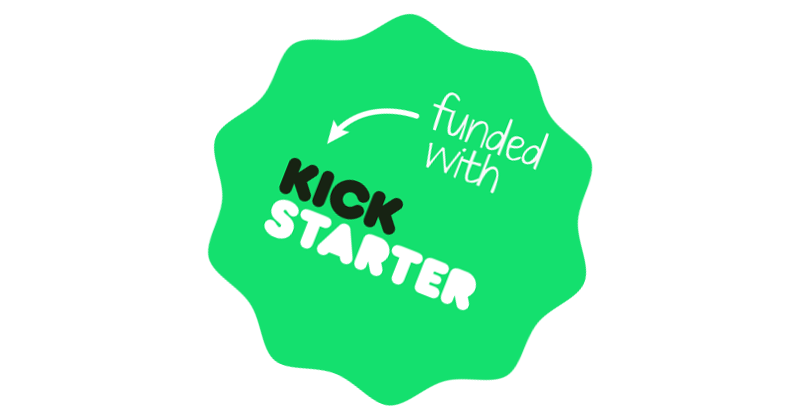So in this article (and the video above), I’m gonna run through some minimum viable product examples, including exactly how to launch your product, your service, or even your business like a pro. This article is following on from another few articles I’ve created in this series, if you missed them make sure you check them out before going through this one. And as we go through this, I’m also gonna give a little bit of an explanation of what a minimum viable product actually is, and how you should implement these strategies across a few different types of business models.

So what is a minimum viable product?
Or MVP as you may have heard it called by definition, and in simple terms, is a bootstrapped version of your product, so just the bare minimum of features that need to be launched, test the demand of your product with the early adopters in your target market.
The thing with a minimum viable product is that it doesn’t always need to be even an actual product, you can often do MVP launches based on concepts, or ideas, or theories, or principals, rather than a physical product.









An example of that might be, let’s say you’re selling a coaching course, or something like that, and you wanna test demand for the course that you’re looking to create before you actually go through the masses amounts of hours, and time, and energy, in actually creating it. So what you do is, you come up with a strap-line of what the course is going to do, and what pains and problems does it solve, what solutions does it create in someones life, and you run some pave marketing campaigns, selling your course before you’ve even created it.









What happens is either your course doesn’t sell, in which case you know that there’s actually no demand for the course that you were gonna create anyway, or you need to reposition it, or change it, or get your targeting right so that you’re getting in front of the right people who need what you’re offering, or your course does sell. If it does sell, well fantastic, what you can do then is you can immediately, or even before you launch it, create the first module or two of your course.
Then as soon as you start selling it, you then start creating the follow up modules behind the first module, and let’s say you set up your course so that people can only access one module per week, and there’s exercises each week that they have to go through as part of your course to help them move forwards in the area that your course solves, whatever that may be.
So one model per week, this means you can create the rest of the modules week by week as someone is actually going through your course. The benefit of this is that you’ve created the whole course only after you’ve started actually selling it to people and you’ve proven that there’s a demand.











Another example is in one of my businesses called bamboobar, and we provide an eco-friendly deodorant product. We came up with the idea of the product, I was actually in Guangzhou in China and I was going to the Canton Fair to find bamboo suppliers for this product. I happened to be in Asia anyway, I wouldn’t have necessarily gone all the way to China if I wasn’t over that side of the world in the first place, but the point is that we pre-sold the product, the idea of the product, way before we even physically had a product.
What happened was we launched paid ads to three different target markets and we tested these campaigns, selling the bamboobar product, the imagery we used for the product was CGI imagery. So we used Upwork.com to pay a CGI artist to design images, pictures of our product, which we could do for a fraction of the cost that it would have taken to manufacture the actual product and then get it imported.



And obviously to go through manufacturing we’d need to order a minimum 1,000 unit quantity, and the whole process would have been extremely long winded, but instead we got CGI designs, 400 bucks for 12 images, we used those images across our Shopify store and in our ads. We then tested those different target markets, one of them performed really well, and we were selling it at 25 pound unit cost with a 6 pound cost per sale.












So we proved that the market wants the product, once we’d proven that the market wants the product we then go into the manufacturing process and start developing the product from scratch. Now, what happened when we sold the product is they would then, the person who bought would automatically then receive and email that, “Hey, so sorry, product’s actually out of stock, “however you’ve been given a full refund “and here’s a discount code to use “when we next have our product in stock.”
The benefit of doing it this way was that we could really find out what people actually want through the testing different product designs. Now the product didn’t physically exist, no other companies manufactured what we’ve now done, it was something that we conceptualised from scratch, and obviously to bring that to market would be quite capital intensive.









The product didn’t exist, I’m guessing because it was quite capital intensive, and to even get to the point of establishing that there was a demand, nobody would wanna produce the product before establishing there’s a demand, which is why we had to establish a demand first before we could go to manufacture.
So that’s another example of minimum viable product launch strategy, we sold a product before the product existed, we refunded the people because we needed to test buyer intent, we needed to test that people were actually willing to pay for the product. We couldn’t just say, “Hey, enter your email address “and we’ll let you know when it’s available”, ’cause that’s not buyer intent. Like people will sign up, but they won’t necessarily purchase, so we needed to test the purchase.












Another example of minimum viable product launch strategy, or lean startup launch strategy could be to pre-sell a product before it actually exists. So things like Kickstarter for example, Kickstarter’s a crowdfunding platform where business owners, or product creators, can list their product ideas on Kickstarter, and if people really like the idea, and they wanna see this product, they can fund and back this project.



What happens as a result of funding and backing this project, for the amount they fund, they would receive something from you, as a business owner in return. So you might say, “Hey, if anyone pledges $50 or more, they will receive two versions of our product from scratch and a special thank you certificate for being one of the first to bring this product to market”, or something like that. So people fund, fund, fund, fund, fund your project and then if you hit the threshold that you need to hit to cover the cost of manufacturing and bringing it to market, you would then receive the payment from Kickstarter, then you can go to manufacture and then you just fulfil on your orders and obligations for the people that funded you. All right, so Kickstarter is another example of minimum viable product strategy. The minimum viable product is literally just an idea that you’ve listed on Kickstarter and if people like the idea, they back it.









So to summarise all of this, we can take these ideas, take these concepts, and ask, what’s the minimum version of our product that we can create, most effectively, in the least possible time, and for the least amount of capital that’s going to test the demand for our product with our target market? What can we do to test whether people actually will pay for this product, or this service?
If you can do this in a way that is going to enable you to test ideas without sinking huge amounts of capital into it, it’s gonna mean that as a business owner you’re far more able to actually hit on what the market wants and actually provide people with what they need.
Always adopt this strategy whenever you’ve got any kind of launch, any kind of idea, you’re starting up in any way, ask what’s the minimum viable product that we can create to start testing the market and testing buyer intent.







